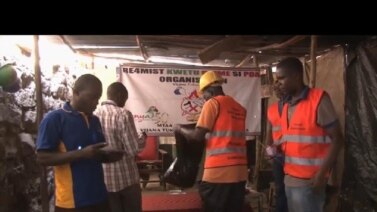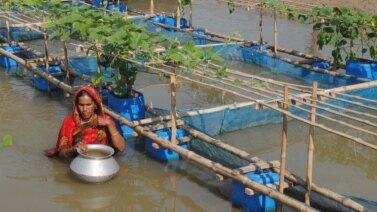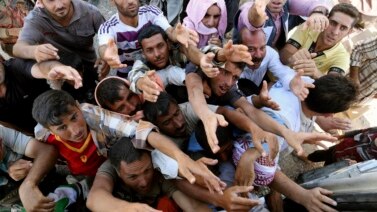
African Union officials say the AU is making progress in its fight against the Lord’s Resistance Group. But officials say they need more money to carry out the campaign. Without more resources, they say, the AU’s Regional Task Force may need more time to stop LRA leader Joseph Kony and his army.
The Lord’s Resistance Army was once known for seeking to overthrow the government of Uganda and its president, Yoweri Musevenei. The LRA became famous for burning villages, kidnapping children and displacing thousands of people.
But a military officer says the formation of the regional task force weakened the guerrilla group. The task force has several bases in Uganda, South Sudan, the Democratic Republic of Congo and the Central African Republic. All four countries offered troops for operations against the LRA. Lieutenant General Samuel Karuma talks about efforts to stop the group.
“We’ve been reducing their strength; that is by killing some of them and capturing some of them. To the level of killing the number two in the hierarchy of their leadership and so many other top commanders, and some of the top commanders also have defected.”
LRA guerrillas started operating in South Sudan after the group was forced out of Uganda. Observers believe the LRA is now split into five main groups and operates mainly in the CAR and the DRC. The group hides food and other supplies there.
The task force countries promised a total of 5,000 soldiers. 2,000 from Uganda, and 1,000 from each of the other three countries. But a Ugandan commander says none of the countries has been able to provide the promised troops. Colonel Mike Kabagno heads the Uganda force in the CAR.
“As we speak now, Uganda is at 1,500. We were at 2,000, but (with) other commitments, we keep on going up and down. Central Africa, nil. When (President Francois) Bozize was overthrown, everyone fizzled out. DRC, 100, 500. It keeps up and down. South Sudan, the same thing. They have problems, so they have to come in and out. The figure now (is) 100, 200.”
Political unrest, violent conflict and a lack of resources prevented countries from sending the troops needed to fight the LRA.
The United States military is providing air support. The U.S. Africa Command, known as Africom, also provides training.
The African Union approved the task force, but did not provide an order or mandate for it. That means there is no financial support, and donors must provide everything needed.
General Karuma says there are many issues because the LRA fighters are always on the move.
“We need the mobility. We need to cater for our troops for morale purposes and other things that make the force to operate. And manpower. If we could get the original projected force of 5,000, yes. But now we are operating at about 2,000. And these countries are huge in terms of size.”
The Joint Intelligence Operations Center collects and studies all information about the LRA. The center is based in the Democratic Republic of Congo. Agents gather intelligence from captured LRA fighters or from people who left the group. The LRA also released several women and children in August and September. AU officials say this is another sign the group is getting weaker.
Intelligence reports suggest the LRA has changed from an active combat guerrilla group to one always running from the task force.
Captain Louis Charles is acting coordinator of the intelligence center. He says that even if the hunt for Joseph Kony proves successful, it will not necessarily mean the end of the LRA.
“If Kony is captured or killed, I think, that some soldiers, some fighters will surrender. But the groups, some were born in the forest. They will remain in the forest.”
Intelligence experts think the LRA has between 300 and 500 fighters. They say the group continues to earn money from sales of elephant ivory in the DRC. They say the fighters move freely in areas with small populations. Troops from the affected countries rarely inspect those areas.
I’m Caty Weaver.
This report was based on a story from reporter Marthe van der Wolf. George Grow wrote this story for VOA Learning English. Caty Weaver was the editor.
Words in This Story
progress - n. movement forward or toward improvement or a goal
famous - adj. known very well to many people
split - v. to separate into two or more parts; to divide or break into parts
mandate - n. an official order to do something
combat – n. active fighting especially in a war
Now it’s your turn to use these Words in this Story. In the comments section, write a sentence using one of these words and we will provide feedback on your use of vocabulary and grammar.





